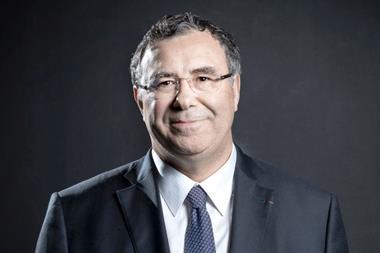The Investment Association (IA) has revealed its plans for a new fund structure specifically designed to invest in illiquid asset classes – part of three areas of development for the investment management industry over the next few years.
The UK’s asset management trade body announced proposals for the creation of a “long-term assets fund” structure in its 2025 Vision report, launched this morning at its flagship annual policy conference.
It consulted with customer groups and wider stakeholders on the new structure and confirmed publication of a detailed blueprint later this year.
In the report, the IA stated that the long-term assets fund would be open-ended so that defined contribution (DC) pension schemes could access it, have the ability to invest in less liquid asset classes, and be able to receive new money to invest and for investors to redeem at appropriate time intervals.
It was unlikely to be offered in the mainstream retail fund market, the IA said, without the requirement for advice.
The report said: “The fund would have high standards of customer protection, while helping to ensure that evolving customer needs in key markets, notably the DC pensions and retirement income market, can be better met.”

Chris Cummings, chief executive of the IA, said its proposals to develop the long-term asset fund would respond to “changing customer needs and support the financing of companies and public projects”.
The report also revealed the IA’s plans for a new onshore professional investor regime that would position the UK as “a go-to destination internationally for more professional investors looking to access the widest range of investment strategies”.
Cummings added: “With the UK set to leave the EU over the next few months, these proposals will also help future-proof the UK’s investment landscape, ensuring it can remain competitive on a global scale and allowing international investors to benefit from innovation in our country’s fund regime.”
Sustainability and stewardship
The IA also outlined its vision for a “more value-focused industry in which sustainability and stewardship are at the forefront, particularly in the context of the challenge of global climate change”.
The trade body set out in its report that a better market for stewardship could be achieved by improved and more consistent public disclosure of stewardship activities and outcomes by investment managers. In addition, it advocated a clearer alignment of incentives across the investment chain and a clearer focus on long-termism in line with the investment horizons of beneficiaries.
The IA’s third key area for development was greater adoption of technology, which it said would “lower costs to customers and protect against increasingly complex and borderless cyber threats”.
It already collaborates with fintechs through its fintech innovation hub, Velocity.
Cummings said the investment management industry was at an “inflection point”.
He added: “With three quarters of UK households using the services of an investment manager, our vision for the future is focused on our customers, ensuring they can get sustainable, long-term returns from their investments.”












No comments yet